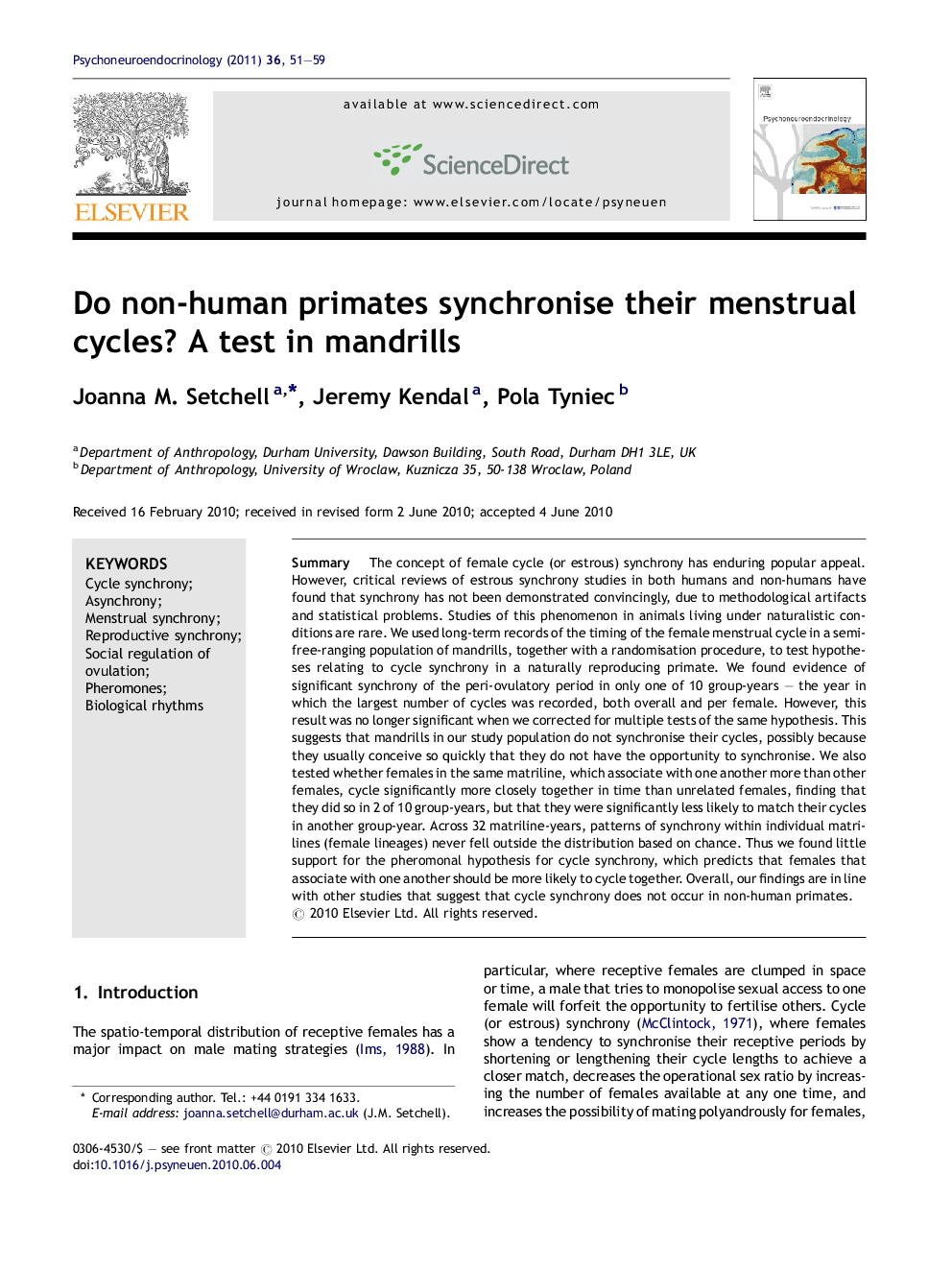| کد مقاله | کد نشریه | سال انتشار | مقاله انگلیسی | نسخه تمام متن |
|---|---|---|---|---|
| 335967 | 547065 | 2011 | 9 صفحه PDF | دانلود رایگان |

SummaryThe concept of female cycle (or estrous) synchrony has enduring popular appeal. However, critical reviews of estrous synchrony studies in both humans and non-humans have found that synchrony has not been demonstrated convincingly, due to methodological artifacts and statistical problems. Studies of this phenomenon in animals living under naturalistic conditions are rare. We used long-term records of the timing of the female menstrual cycle in a semi-free-ranging population of mandrills, together with a randomisation procedure, to test hypotheses relating to cycle synchrony in a naturally reproducing primate. We found evidence of significant synchrony of the peri-ovulatory period in only one of 10 group-years – the year in which the largest number of cycles was recorded, both overall and per female. However, this result was no longer significant when we corrected for multiple tests of the same hypothesis. This suggests that mandrills in our study population do not synchronise their cycles, possibly because they usually conceive so quickly that they do not have the opportunity to synchronise. We also tested whether females in the same matriline, which associate with one another more than other females, cycle significantly more closely together in time than unrelated females, finding that they did so in 2 of 10 group-years, but that they were significantly less likely to match their cycles in another group-year. Across 32 matriline-years, patterns of synchrony within individual matrilines (female lineages) never fell outside the distribution based on chance. Thus we found little support for the pheromonal hypothesis for cycle synchrony, which predicts that females that associate with one another should be more likely to cycle together. Overall, our findings are in line with other studies that suggest that cycle synchrony does not occur in non-human primates.
Journal: Psychoneuroendocrinology - Volume 36, Issue 1, January 2011, Pages 51–59